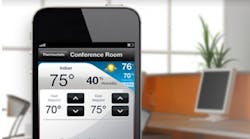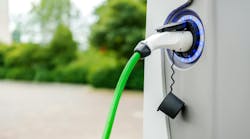Honeywell has announced a two- year program with CPS Energy in San Antonio, Texas. The utility will use automated demand response (ADR) technology and services from Honeywell to connect and collaborate with commercial and industrial customers, and adjust electricity consumption when the demand for energy peaks. As a result, CPS Energy will have additional tools to enhance the stability of the Texas electrical grid, especially on hot summer days when air conditioners and other cooling equipment are often running at capacity.
The program is expected to be the largest ADR deployment by a municipal utility, and will build on a successful pilot project that CPS Energy and Honeywell completed last year. The pilot included nine commercial and industrial facilities, and helped trim demand by approximately 1.5 megawatts (MW) — a more than 10 percent reduction in each building on average. Honeywell and CPS Energy will look to enroll 60 additional sites, bringing the potential reduction to nearly 6 MW, enough electricity to meet the typical load of more than 2,200 homes.
"Shifting demand is simple in theory, but making the right connections with the right energy loads and delivering repeatable results is critical to having the lasting impact utilities need," said Jeremy Eaton, vice president of Honeywell Smart Grid Solutions. "We assist customers like CPS Energy in striking this balance to help create a more stable, sustainable grid."
Extreme temperatures can put stress on power lines and transformers, and have historically required utilities like CPS Energy to fire up "peaking plants" — small power plants that usually sit in reserve to produce additional electricity to meet consumer demand. ADR serves a similar purpose; however, the concept centers on working with utility customers to temporarily use less energy, rather than building costly plants.
As part of the program, Honeywell will identify and enroll customers, audit their buildings to identify curtailment opportunities, and work to customize and implement changes that trim energy use, but don't impact core business functions. In return for joining, customers receive an incentive for each kilowatt they're able to shed. The hardware and software installed can also help each organization better manage electricity use every day and boost long-term energy efficiency.
Honeywell will also provide its Akuacom Demand Response Automation Server, software as a service (SaaS) that enables CPS Energy to send signals to building automation systems at sites enrolled in the program, triggering the short-term load-shedding measures the customer selects — heating and cooling adjustments, and subtle changes in lighting, for example.
Honeywell also manages a residential demand response for CPS Energy, which started in 2004 and now involves more than 81,000 homeowners. Combined, the residential and commercial-industrial programs should allow the utility to generate the same amount of "negawatts" as several gas-fired peaking plants can produce megawatts.
In addition, demand response is an integral part of CPS Energy's Save for Tomorrow Energy Plan (STEP) — a strategy to save 771 MW by the year 2020. STEP initiatives, such as residential and commercial rebates, and demand response programs, focus on conserving energy that would have to be produced through new power plants. In 2013, CPS Energy saved 130 MW during peak times through demand response programs.


